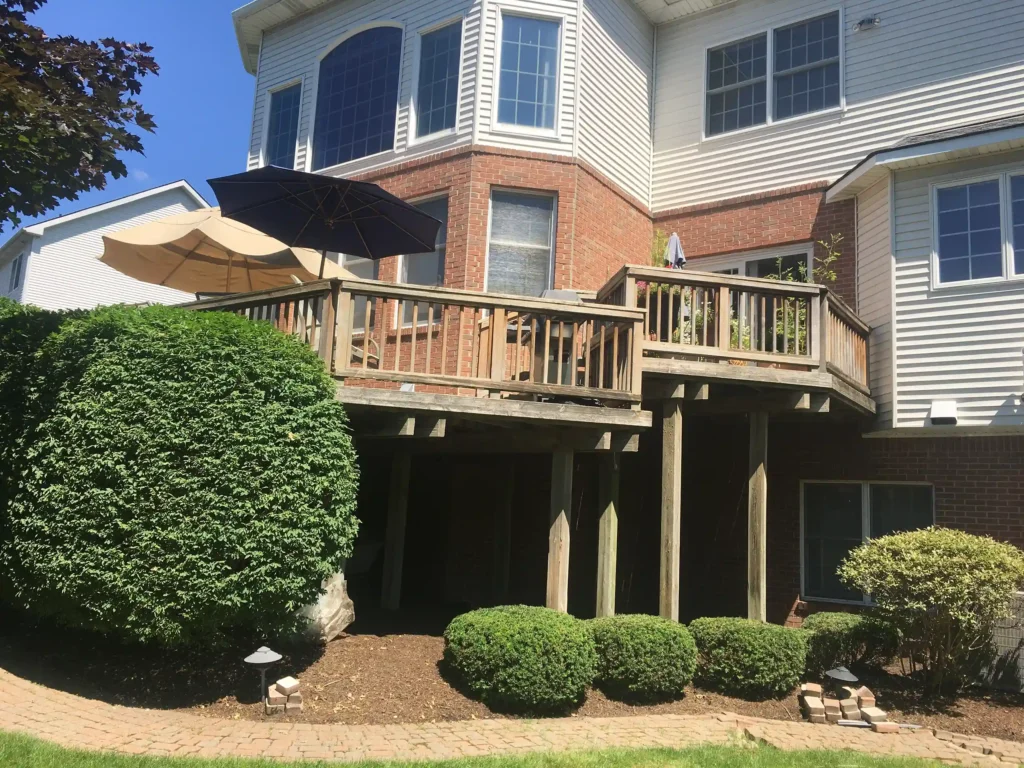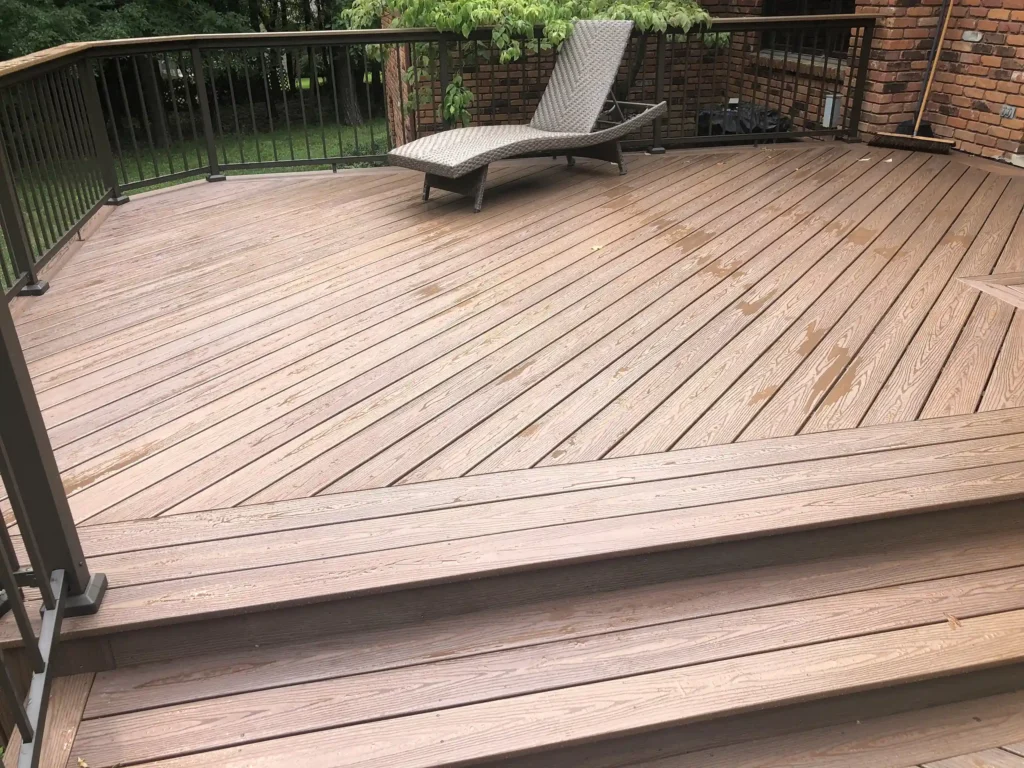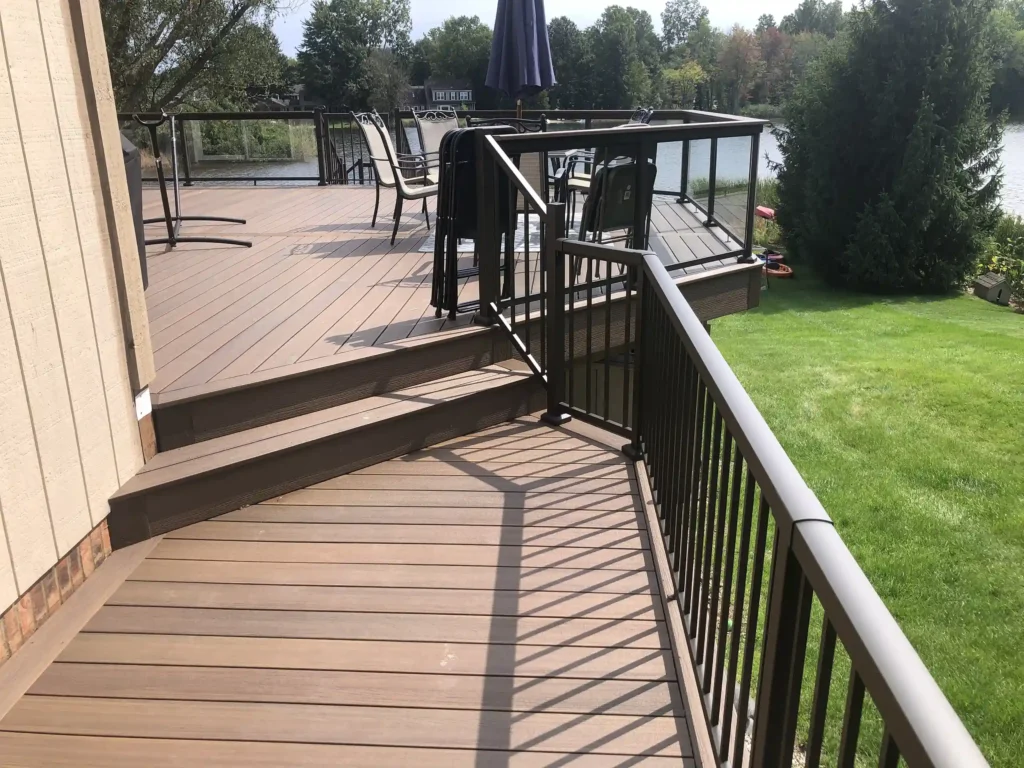Composite Decking vs Wood Decking: Which is Best for Your Deck?
Jul 29, 2024When building a deck, homeowners have a choice: Composite decking vs wood decking.
C&L Ward offers an innovative composite decking option that combines the aesthetic appeal of wood with advanced technological benefits. We’ll explore how composite decking compares to traditional wood real options regarding durability, maintenance, cost-effectiveness, and environmental impact.
Understanding these factors will help you see why C&L Ward‘s composite decking, Fiberon, might be the smart choice for your outdoor living space.
Understanding Wood Decking
Wood decking has been a popular choice for outdoor spaces for centuries. Many homeowners find its classic and natural aesthetic appealing. When considering wood decking, it’s important to understand the available options and their characteristics.
Types of Wood Decking
- Pressure-treated lumber: This is the most common and budget-friendly option. It is typically made from pine chemically treated to resist insects, rot, and moisture. It is cost-effective but requires regular maintenance to maintain its appearance and structural integrity.
- Softwoods: Cedar and redwood are popular softwood choices. These naturally resistant woods offer better durability than pressure-treated lumber and look beautiful. They are more expensive than pressure-treated options but less costly than hardwoods.
- Hardwoods: Exotic woods like ipe, mahogany, and teak are extremely durable and naturally resistant to insects and moisture. They offer a distinctive grain pattern and long-lasting performance but have a higher price tag.
Characteristics of Wood Decking
- Natural Beauty: Wood decks provide a warm, organic look. The natural grain patterns and color variations add character to outdoor spaces.
- Customization: Wood can be easily stained or painted to match your home’s exterior or personal preferences.
- Initial Affordability: Wood decking often costs less upfront than composite materials, especially for pressure-treated options.
- Maintenance Requirements: Wood decks require regular upkeep, including cleaning, staining, and sealing to protect against weathering, fading, and rot. This ongoing maintenance can add to the long-term cost of ownership.
- Environmental Factors: Wood decks exposed to the elements can be susceptible to splitting, warping, and discoloration. If not properly maintained, they may also attract insects.
- Lifespan: With proper care, wood decks can last many years. However, their lifespan is generally shorter than that of composite decking.
Understanding Composite Decking
Composite decking is made from a mixture of wood fibers and plastic materials. The wood components include sawdust, wood chips, and wood fiber pieces, while the plastic elements may be virgin or recycled.
This combination results in a product that mimics the appearance of wood while offering enhanced durability and reduced maintenance requirements.
How Fiberon Manufactures its Composite Boards
Fiberon utilizes advanced manufacturing processes to create high-quality composite decking. The process begins with material selection, using a blend of recycled plastic and wood scraps to emphasize sustainability.
Two primary manufacturing methods are employed: extrusion and compression molding. Extrusion involves mixing raw materials and forcing them through an opening to produce deck boards of a consistent size and shape. Compression molding combines molten materials placed on a wood grain mold and compresses them under extreme heat and pressure, creating a physical bond.
Fiberon applies an additional protective layer for capped composite decking that enhances staining, fading, and scratching resistance.
The company offers a variety of colors and wood-like textures, allowing homeowners to choose decking that complements their outdoor aesthetics.
Throughout the manufacturing process, Fiberon implements strict quality control measures to ensure each board meets its high standards for durability and appearance.
Fiberon vs. Wood: Key Advantages
Fiberon composite decking offers several significant advantages over traditional wood decking. Here are the key benefits:
- Durability and Longevity: Fiberon composite decking withstands the elements better than wood. It resists rot, decay, and insect damage, which are common issues with wood decks. This durability means a longer lifespan, with composite decking lasting about twice as long as wood. The material is less prone to structural failure caused by environmental exposure, providing greater safety and peace of mind.
- Low Maintenance Requirements: One of the most significant advantages of Fiberon decking is its minimal maintenance needs. Unlike wood decks that require annual sanding, staining, or painting, Fiberon decking only needs occasional cleaning with soap and water. This low-maintenance characteristic saves homeowners both time and money.
- Moisture and Insect Resistance: Fiberon decking is highly resistant to moisture and insects, two major threats to wood decking. The composite material doesn’t absorb water like wood, reducing the risk of warping, swelling, or rotting. Additionally, insects such as termites aren’t attracted to the composite material, eliminating a common problem associated with wood decks.
- Splinter-Free Surface: Unlike wood decks, which can splinter over time, Fiberon decking maintains a smooth, splinter-free surface throughout its lifespan. This feature makes barefoot people, children, and pets safer, enhancing your outdoor space’s comfort and usability.
- Eco-Friendly Materials: Fiberon composite decking is made from recycled plastic and wood fibers, making it an environmentally friendly choice. This manufacturing process prevents over 70,000 tons of plastic and other waste from ending up in landfills or incinerators yearly.
Explore Composite Decking vs. Wood Decking with C&L Ward
Elevate your outdoor space by choosing the best decking option for your needs. Contact C&L Ward today or visit one of our design centers to explore the benefits of composite decking versus wood decking. Our expert team is ready to answer your questions and help you understand each material’s advantages and what type of railing or lighting will complement your design.
Discover how our custom deck solutions can enhance your outdoor living area with the durability and low maintenance of composite decking or the classic appeal of wood. Let’s make your dream deck a reality.
Composite Decking vs Wood Decking FAQs
What are the main differences between composite decking and wood decking?
Composite decking is made from a blend of wood fibers and plastic, offering superior durability and low maintenance compared to traditional wood decking. While providing a classic and natural look, wood decking requires regular maintenance, like sanding, staining, and sealing, to prevent rot, decay, and insect damage.
How does the cost of composite decking compare to wood decking?
The initial cost of composite decking is generally higher than that of wood decking. However, composite decking’s long-term savings are substantial due to its low maintenance requirements. Wood decking may have a lower upfront cost but incurs higher maintenance expenses over time.
How does the durability of composite decking compare to wood decking?
Composite decking is highly durable and resistant to rot, decay, and insect damage, making it a longer-lasting option than wood decking. Wood decking, while durable, is more susceptible to environmental factors and requires regular upkeep to maintain its integrity and appearance.
